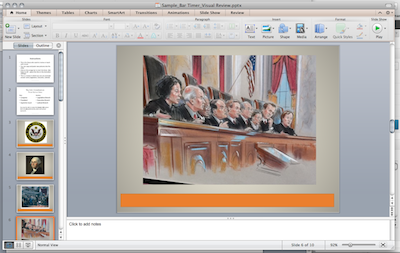History Games: Facts Review
A MiddleWeb Blog
By Aaron Brock
With summer in full swing, many educators are winding down, and few want to be planning for the next school year quite yet. With this in mind, I thought it might be best to begin my blogging at Future of History with something I enjoy inside and outside of the classroom: Games.
A good game always involves some degree of mental stimulation, and I believe there are too few well-crafted games that are appropriate for middle school history students. To fill this gap, I develop my own games and puzzles to integrate into the social studies curriculum, and I’ve found they can have a noticeable effect on student engagement and academic success.
This is the first in a three-part series about incorporating games into the social studies classroom. In this article, I’ll focus on review games, which are the easiest challenges to create and incorporate. My second article will discuss the value of games as teaching tools, and the most effective ways to design and utilize games to develop skills and deliver content.
I’ve also designed a few games that encourage analytical thinking – the ultimate goal of any good social studies curriculum – and these will be the focus of the final installment in the series.
At the end of each entry, I’ll include some examples of games that I have used, along with instructions. Feel free to utilize any or all of this material in your own classroom.
Review Games
The most common use of a classroom game in a social studies classroom is the review game. This can often devolve into little more than a question-and-answer session between the teacher and one or two students. But I’ve found that there are some easy ways to adapt a fairly traditional review into a game that engages most of the students.
I work with students in an urban school district, and all of my classes have a very broad range of abilities – from those who are functionally illiterate to students who are performing a little above grade level. To encourage involvement across the ability spectrum, I usually split review games into two rounds; in the first round students can use notes, and in the second round they cannot. This gives the struggling students a chance to have some success before the more advanced students show off their memories. It’s also a great way to trick my students into reading and re-reading their notes and the texts from our current unit.
Engagement strategies
Creating small teams (2-3 students) naturally increases the number of students participating in the activity, and it’s an easy way to involve those who might otherwise struggle with review. One way I engage an entire class during a review game is to hand out 7-10 answer cards to each team. Each team member is responsible for a set of 2-3 cards. The teams must flash their answer before a timer runs out, so students must work together to make certain the correct card goes up. Points are awarded by team, making this an ideal setup for mixed-ability groups.
Another way to engage students across ability levels is to require a different respondent each time a team answers a question. If the game is a more standard question-answer game, select a “random” (often the least engaged) student from each team to answer. The advanced students can help the struggling students, but they cannot answer for them.
Visuals are often important to my students. If I tell them that there is a minute timer, that means nothing. If I create a simple animated timer in PowerPoint that slowly disappears, suddenly things become more urgent, and thus more fun. Anything you can do to make the review more like a “real” game will go a long way to bringing more students on-board.
Traditional review & the Common Core
While the Common Core is supposed to herald a shift away from the memorization of discrete facts and toward critical thinking skills, the history standards and thus the curriculum are still largely up to the states. This means that students will still need to have periodic reviews of events, people and places in many social studies classrooms. By making these reviews fun, teachers can make tests and assignments that utilize these facts far less intimidating.

Use this template to review or teach with visuals. Click the orange bar timer and it starts to disappear from right to left.
Slides (with timers) you can use for review games
Here are some Powerpoint templates I use for review games. I’ve included basic instructions in the first slide of each set. If you have questions, ask them in the Comments here. And if you have other ideas for review games, please share.
Sample_Circle Timer_Warning Timer
































These are some great ideas! To review for tests, I sometimes write terms on the board, and divide the class into two teams (my world history class only had 12 students so it was easy). Each team has a flyswatter and take turns swatting the correct answer. This also works for true and false really well. Students love it! And it was easy to tell who got the answer first.
Thanks for the tips! I’m really looking forward to what you have to say in the 3rd blog. I love to use games, and have played Diplomacy in my own room.
Thank you for sharing! I’m currently completing my student teaching in 10th Grade World History. I’m finding engagment my biggest challenge and am little perplexed as I find myself extremely entertaining. (I’m kidding, of course.) I’m going to check out your other artlcles now. Thanks again.